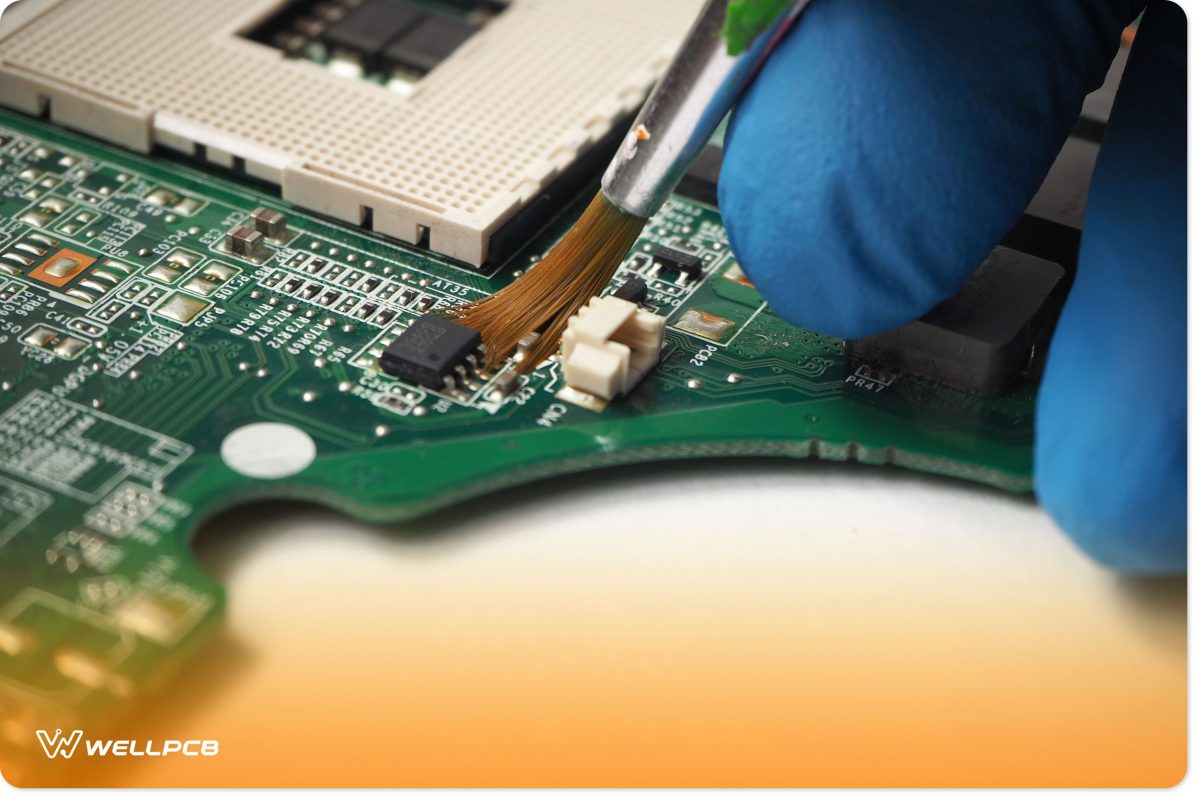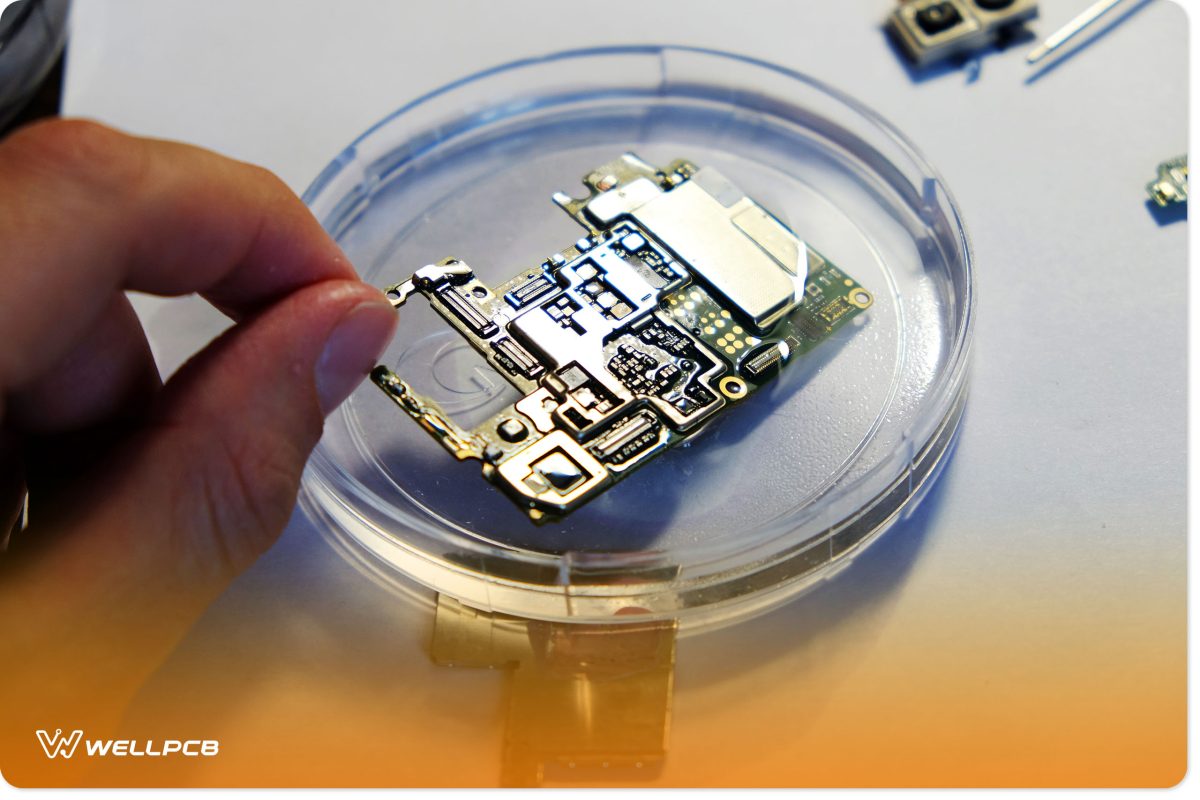Contents
Different types of contamination on PCB Cleaning
Rosins, soils, solder balls, ions, fluxes, fingerprints, particles of boards themselves, etc.; these contaminations can be low/marginal soluble, moderate soluble, and highly soluble in the cleaning agent, and hence the concentration of cleaning agent must be used from low to high accordingly. The high soluble contaminations are easily cleaned, while the opposite is true for marginal soluble.
The high impingement energy with an increased flow of cleaning agents during the cleaning process can considerably increase the cleaning efficiency.

Side effects of PCB Cleaning
- Forceful cleaning agent can corrode metallic parts
- Part numbers/markings can get faint
- Some components can trap particles of cleaning agent
The selection of PCB cleaning agents compatible with PCB is essential to reduce the above side effects.
The significant factors during the PCB cleaning process are the time/duration of the cleaning process, the concentration of the cleaning agent, impingement, and the temperature.
To harden soil contamination will significantly reduce the efforts of cleaning. Hardening of soil can be achieved by baking, hot reflow, and multiple reflows.
Some Major Cleaning Agents
Detergent

The method of using our agitation, spray, and ultrasonic. These are specifically used to remove fluxes. They have a 3-50% water concentration. Temperature constraints are between 20oC and 60oC.
Fluorinated Solvent
These cleaning agents have low solvency power alone. But when combined with hydrocarbons, then the compound has excellent solvency.
Brominated Solvents
They pose environmental hazards and have low costs. They have low surface tension, so the ionic contamination may not be removed entirely. These solvents must be tested with all materials for compatibility issues.
Glycols
They are the same as formulated hydrocarbons. It cannot dissolve all contaminants unless formulated. They have drawbacks of washing with tap / distilled water.
Petroleum Distillates
They are used for cleaning purposes in cold environments. Examples are Ketone and Alcohol.

The Surface Tension
As the size of the PCB decreases or the PCB gets miniaturized, the surface tension of the cleaning agent must also be lower. This issue has raised the use of various cleaning agents to be used in different PCB types. For example, in a product where the PCB has some components and cavities where tap water (80mN/m) with high surface tension cannot clean contaminations, it is preferred to use glycols and formulated hydrocarbons with 25-35 mN/m.
Also, when mixed with water, the detergents get a surface tension of 45-35 mN/m can also be used.

Mechanical Agitators
The mechanical agitators are ultrasonic transducer machines that dissolve and unfasten the sticky contaminants by penetrating the vibrations underneath areas where cleaning agents could not reach.





